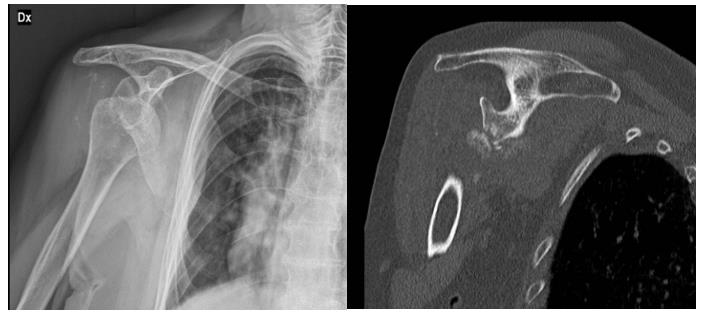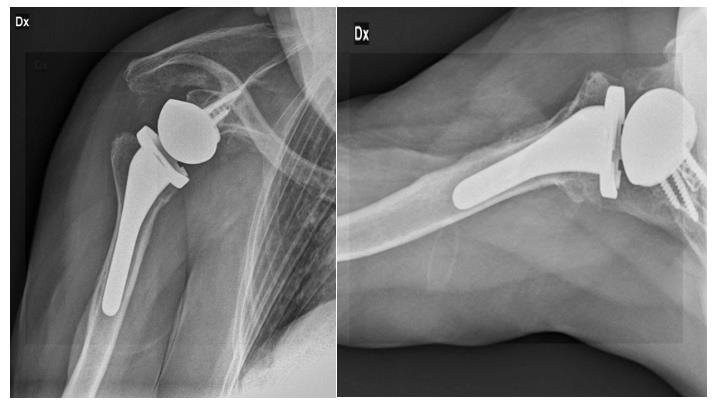Computer Navigated Reverse Total Shoulder Arthroplasty for a Chronic Glenohumeral Dislocation: A Case Report
Introduction
Chronic glenohumeral dislocation is a characteristic affection, considered an important cause of shoulder arthropathy [1]. Multiple factors can be involved in the establishment of this condition. Usually, patients refer a history of an initial injury as a combination of abduction and external rotation. Most of the times patients are elderly with concomitant pathologies, poor bone quality and rotator cuff tears [2]. In these cases, shoulder arthroplasty is usually necessary and reverse shoulder arthroplasty has yielded satisfactory outcomes in patients with cuff tear arthropathy and other degenerative changes of the shoulder joint. The concept of this implant theoretically allows a good stabilization, but sometimes excessive bone-loss and deformation of the glenoid produce a malposition of the implant [3,4]. In this case, in order to place the implant correctly, we opted for a computer-navigated treatment, because of the severe condition of the glenoid. However, literature is still poor about the use of computer-navigated systems in this kind of condition [5].
Case Report
In January 2021, during the third wave of the COVID-19 pandemic, a 78-year-old woman came to hospital “Poliambulanza” of Brescia because of long-lasting persistent pain and a complete right shoulder dysfunction, following an acute trauma. X-rays showed a glenohumeral anterior-inferior dislocation of the right, dominant, upper arm. Subsequently a TC exam was obtained to classify the glenoid’s erosion, resulting in an “E4” stage according to Favard’s classification (Figure 1). Moreover, TC showed a complete rotator cuff tear with associated Bankart’s and Hill-Sachs’ lesions. Concomitant pathologies included atrial fibrillation in anticoagulant therapy and hypertension. Pre-operative evaluation included DASH questionnaire (score: 107), ASES questionnaire (score: 22) and CONSTANT score (score: 31).A deltoid-pectoral approach was performed.
Exactech’s navigation system (ExactechGPS®) assisted the surgeon for the placement of the baseplate Equinoxe RS posterior augment 8°. An Equinoxe RS 38mm glenosphere and a Equinoxe humeral stem press-fit 11mm completed the implant (Figure 2). Post-operative follow-up after two months highlighted a satisfactory range of motion, with active elevation and abduction of 70 degree without pain. Intrarotation and extrarotation still resulted limited to few degrees.
Discussion
Reverse shoulder arthroplasty has gradually gained several indications in the last decades, including chronic GH dislocations [6]. However, few studies described long-term follow-up and they are all represented by small case series. Even less studies described the use of computer-navigated systems in this specific condition and how it can help the surgeon, especially considering severely deformed glenoids, where a correct placement of the baseplate turns out to be difficult [7,8]. Since the COVID-19 pandemic made it difficult for the patients to access to healthcare, some of these particular chronic conditions could be more prevalent in the near future [9]. More studies are needed to assess the best way of treatment for this particular condition and the benefits of the computer-navigated systems in severely deformed joints.In the end, ExactechGPS® allowed us to implant the inverse prosthesis in the best bone stock considering the anterior bone loss of the glenoid.The system made it possible to study through a CT image with support and accurate planning with dedicated engineers to implant the baseplate in the best possible position, as programmed with the prepared planning.




No comments:
Post a Comment
Note: Only a member of this blog may post a comment.